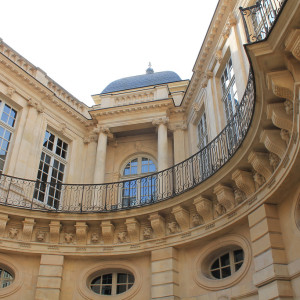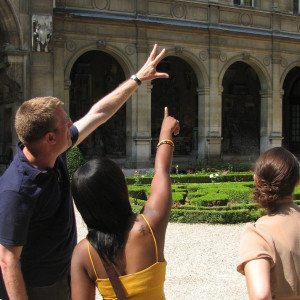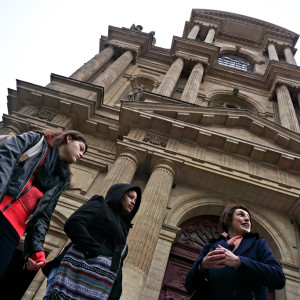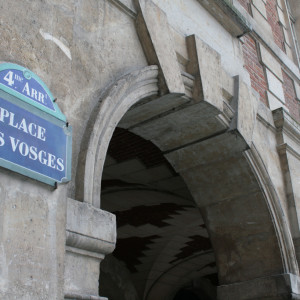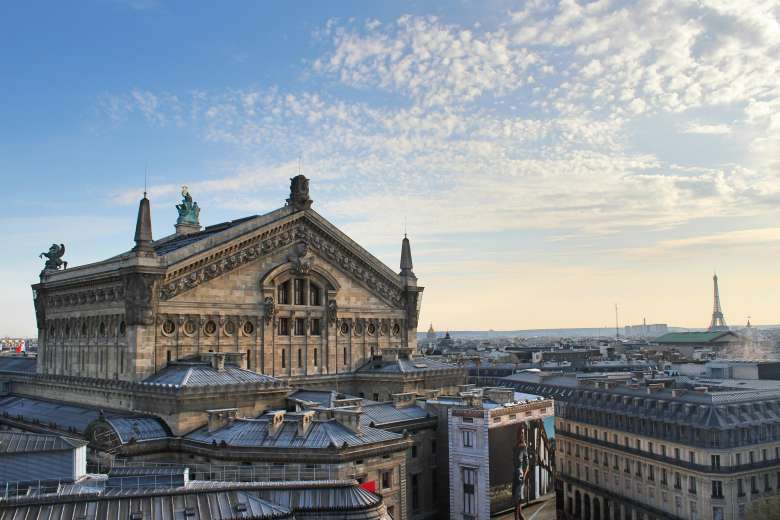Tour Details
- Duration
- 3 hours
- Product Type
- Tour
- Venues
-
- Hôtel de Soubise
- Hôtel de Sens
- Marais
- Place des Vosges
- Hôtel Carnavalet
Select a date
Tour Description
Once home to the crème de la crème of the French aristocracy, the Marais is full of hidden treasures waiting to be discovered, from private mansions to independent designer shops, from synagogues to museums and contemporary art galleries. This charismatic neighborhood has undergone several dramatic transformations, but its architectural identity is perhaps most defined by these numerous private residences and narrow streets preserving an outline of the medieval city. Noting impressive façades and entering often overlooked courtyards, we'll step back into time with our guide, an architect or historian, on this 3-hour Marais walking tour. Together, we'll investigate how these iconic mansions tell the story of the social and artistic sea change taking place in Paris between 1550 and 1720, before the French Revolution ushered in the modern era (the subject of our French Revolution Tour Paris).
Marais Walking Tour
The Renaissance arrived in Paris in the mid 16th century, forever transforming art and society in the French capital. However, its most lingering effect is perhaps on Parisian architecture. The Marais is one of the best quartiers to see the examples of the Parisian Renaissance by considering the splendid mansions, or so-called hôtels particuliers built by France's rich and noble families. Depending on opening times and the tenor of the walk, we may view such structures as the Flamboyant-Gothic Hôtel de Sens, the Hôtel Carnavalet (home to the museum of the same name), the Hôtel de Donon (today the Musée Cognacq-Jay), the Hôtel Lamoignon (which now houses the Bibliothèque Historique de la Ville de Paris), the enormous Hôtel Salé (now the Musée Picasso), and the palatial, and rather atypical, Hôtel de Soubise (part of today's Archives Nationales).
"Our guide helped us appreciate French history in ways I did not expect. The walk brought together the different changes in the Marais, and we were able to see many things that we would not have found on our own. It all worked."
A Transforming Quartier
As we move along, more or less chronologically, we'll discuss how the development of French architecture reflected social and political realities of the time, allowing the mansions themselves to offer insight into the lives of Paris' more privileged citizens in the 16th and 17th centuries. Part of the walk will also deal with the history of the Marais itself, and how the area fell into ruin in the 19th century, becoming one of central Paris' poorest neighborhoods. Though the Marais was spared by Baron Haussmann's reforms (a figure discussed further on our Paris City Planning Tour), its former splendors subdivided into tenements and workshops and often unrecognizable under the burden of subsequent additions and neglect.
Urban Conservation
Lastly, we'll uncover the neighborhood's incredible modern history. Ultimately neglected by Haussmann's 19th century reforms, the whole area was later threatened with comprehensive redevelopment in the 20th century. The fate of the aging, historic buildings hung in the balance until culture minister André Malraux championed the Marais as an urban conservation area in 1962. Over the next 45 years, state and city authorities would spend considerable sums buying up properties and restoring the quartier's heritage, often with spectacular results. As our walk comes to a close, we will leave with a comprehensive understanding of the area's transformation—from a basic historical timeline of its progression, to insight into how the development of French architecture reflected social and political realities of the time.
Those interested in the Jewish history of the neighborhood may wish to take our Jewish Paris Tour.
FAQ
What sort of sites are visited on this walk? The Marais district has many former private mansions built mainly from the middle of the 16th century to the end of the 17th century. Most of these are now museums. We may enter some of the structures; others we will view from the outside.
Might there be any additional costs? Each expert includes different sites, so it is possible you may enter a structure that requires an additional ticket. This would be purchased on-site and is not included in the cost of the walk.
Does this walk include visits to mansions that are currently private? Most of the mansions included in the walk are now museums or libraries so you will probably not be entering any currently private mansions.
Is this tour walking-intensive and/or wheelchair accessible? This tour is fairly walking-intensive and the route may include narrow sidewalks and cobblestoned streets. The route may include a visit to Musée Carnavalet or the Hôtel de Soubise, which are only partially accessible. Please contact us to discuss in more detail your mobility concerns so that we can best advise.
Experts
Where You'll Start
116 Reviews
–
Reviews can only be left by Context customers after they have completed a tour. For more information about our reviews, please see our FAQ.
We thoroughly enjoyed our afternoon in the Marais with Georgia. Georgia did an excellent job of thoughtfully telling the stories of many different historical eras.
Tanya
Nov. 12, 2023
The hostess was extremely knowledgeable, friendly and professional.
Caroline
Nov. 9, 2023
We had a delightful fact-filled tour which emphasized the history and archeology that we had asked for plus wonderful explanations of word origins. Our guide Marie was both very charming and extremely knowledgeable. We learned so much about Le Marais, saw many sites we would otherwise have missed, and enjoyed ourselves very much!
Celestea
Nov. 1, 2023
